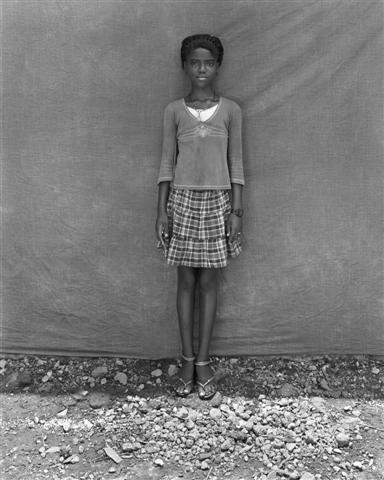Laura Heyman
Laura Heyman was born in Essex County, New Jersey and received her M.F.A. from Cranbrook Academy of Art in Bloomfield Hills, MI.
Her solo exhibitions include Palitz Gallery, NY, NY, Philadelphia Photographic Arts Center, Philadelphia, PA, Deutsches Polen Institute, Darmstadt, DE, Senko Studio, Viborg DK, and Light Work, Syracuse, NY. Group exhibitions include Laguna Art Museum, Laguna, CA, United Nations, New York, NY and National Portrait Gallery, London, UK. In 2010, Heyman was nominated for a John Guttman Photography Fellowship, and was awarded a Light Work Mid-Career Artist Grant. She has received the Silver Eye Fellowship, a Ragdale Fellowship and a NYFA grant.
Her work has been reviewed and profiled in The New Yorker, Contact Sheet, and ARTnews. Collections include MACROSEA, Light Work and Heller Erman. Heyman currently divides her time between Port-au-Prince, Haiti, and Syracuse, New York, where she is an Associate Professor of photography at Syracuse University.
Pa Bouje Ankò: Don’t Move Again
The series Pa Bouje Ankò: Don’t Move Again began with the following question; “Can someone from the first world see/photograph within the third world without voyeurism or objectification?” In November 2009, I decided to test this query in the Grand Rue neighborhood of Port-au-Prince, Haiti, opening a formal portrait studio and inviting members of the local community to have their portraits made.
Port-au-Prince has a large number of portrait studios, and each location is modeled after these spaces, using a variety of backdrops, along with reflectors to control and augment the available light. Shot with an 8 x 10 camera, the images follow the example of artists like Mike Disfarmer, and Seydou Keita. While studio-based portrait photography can carry its own baggage, the parameters of the exchange between photographer and subject in this particular format are well defined and widely understood. There is less room to enact the familiar and problematic situation wherein the first-world artist takes home a photograph of “the other” as souvenir.
Before leaving for Haiti, I was concerned about how the context of these images might change once they were removed from their original environment. I was highly conscious of everything that stood in the way of a real exchange between a myself and the people I was photographing - race, class, opportunity and lack of opportunity, agency, the ability to move freely through the world; things that can make communication difficult, as they are always present, but rarely discussed. What I found when I arrived in Haiti was that I was working within a community of fellow artists and their families and neighbors. I was treated not as a visitor, but as a peer. The community provided me with a great deal of assistance in completing project – in fact I would not have been able to complete it successfully without them.
In addition to whatever they were originally, after the earthquake, the images have become both record and memorial. That event has also shifted the focus of the project, which has evolved to include various rapidly expanding communities in Port-Au-Prince tied to reconstruction. This includes NGO employees, volunteers, missionaries, United Nations officials, business investors, and medical personnel. The first non-Haitian subjects photographed for the project were members of the Joint Task Force-Haiti, in May 2010.









